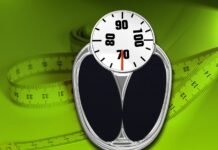Chronic Obstructive Pulmonary Disease (COPD) is a condition that affects the lungs, making breathing difficult. There are four stages of COPD, which are classified based on the severity of the disease.
The symptoms a patient with COPD displays depends on the severity of the disease and the extent of lung damage it has caused. Research studies indicate that smoking aggravates the condition, and in many cases, may also have been one of the primary reasons for the onset of the disease. The problem with COPD is that the symptoms become apparent very slowly when the damage is already done.
However, a patient with COPD who is a smoker needs to quit immediately to control any further damage to the lungs. Smokers can reduce the chances of developing COPD by 50% if they quit.
COPD Symptoms
Persistent Cough
Coughing is a defensive reflex action that is parasympathetic. It is the body’s way of clearing the air passage and lungs of mucus and other irritants that may have been inhaled. When an ordinary person coughs up phlegm, it is clear. However, if the mucus is yellowish, it is an indication of COPD. Some people may cough intermittently through the night, while some may cough as soon as they wake up. However, persistent coughs need to be investigated and treated. Remember, that cough associated with COPD does not have any illness symptoms like cold or flu.
Heavy Breathing with a Whistling Sound
Heavy breathing with a whistling sound or wheezing is another classic symptom of COPD, which may occur during any of the four stages of COPD. This whistling sound occurs even when you exhale lightly because of the excess mucus obstructing your airways. Even when your airways get tightened, they cause wheezing. Although wheezing is a symptom of COPD, it is also a symptom of other lung diseases like pneumonia or asthma. Hence, only a clinical investigation will reveal whether it is COPD.
Breathlessness or Dyspnea
COPD causes lung inflammation, leading to damage, which causes the lungs to constrict. Such constriction causes difficulty in breathing, leading to breathlessness. The difficulty is pronounced with an increase in physical activity. COPD makes a regular walk or daily household chores difficult as enough oxygen does not saturate in the blood.
Fatigue
Another common symptom that COPD patients experience is fatigue, which is caused as the bloodstream and muscles are starved of oxygen. With a very short supply of oxygen, the body tends to slow down, and fatigue sets in very quickly. It is also a strain on your heart and lungs that work overtime to absorb oxygen and expel carbon dioxide, leading to very low energy levels. This symptom is pronounced in the second of the four stages of COPD.
As mentioned earlier, patients can be divided into four groups or stages of COPD – a progression from mild to severe.
Here are the four crucial stages of COPD:
Stage I – Mild COPD
You may experience a persistent cough on most days during this stage. It is also normal or common to feel short of breath while increasing walking or ascending a slight incline. You may experience aggravation a couple of times, though your doctor may not recommend hospitalization. According to the National Institutes of Health (NIH), your Pulmonary Function Test (PFT) results may indicate 80 percent of the predicted response.
Stage II – Moderate COPD
The mildest physical activity leaves you breathless, and you cough up sputum very often, putting a ‘spanner in the works’ as far as your daily routine is concerned. The symptoms may also include chest constriction and wheezing. However, you don’t experience aggravation more than a couple of times, and hospitalization is not required at this stage. Typically, PFT test results show between 50 to 79 percent of the expected response.
Stage III – Severe COPD
Stage III indicates the red flag is up, though a patient still displays almost the same symptoms as Stage II. However, aggravations are more frequent. With exacerbations occurring more than a couple of times, you may have to be hospitalized at this stage. Brisk walking or exercising becomes laborious, and patients get tired quickly. The quality of life takes a back seat because of increased fatigue and frequent exacerbations. At this stage, the PFT results hover between 30 and 49 percent of the expected response.
Stage IV – Very Severe COPD
COPD patients tend to get breathless even while resting. Even daily activities like bathing, dressing, or undressing become too laborious. At this stage of COPD, patients get fatigued quickly and become listless often. Some episodes of breathlessness can be life-threatening, requiring immediate hospitalization.
PFT results dip below the danger mark at 30 percent of the expected response. Being hospitalized frequently cannot be ruled out. However, COPD can still be managed with proper treatment like oxygen therapy using a portable oxygen concentrator (POC), leading to an improved quality of life. If you experience any trouble with breathing or have a persistent cough, it needs to be investigated by your doctor immediately.
Summing it Up
Living with COPD can be very challenging and needs the support of the family of the affected person. You need to seek medical help when an unexplained cough persists or when there is breathlessness without any reason.























